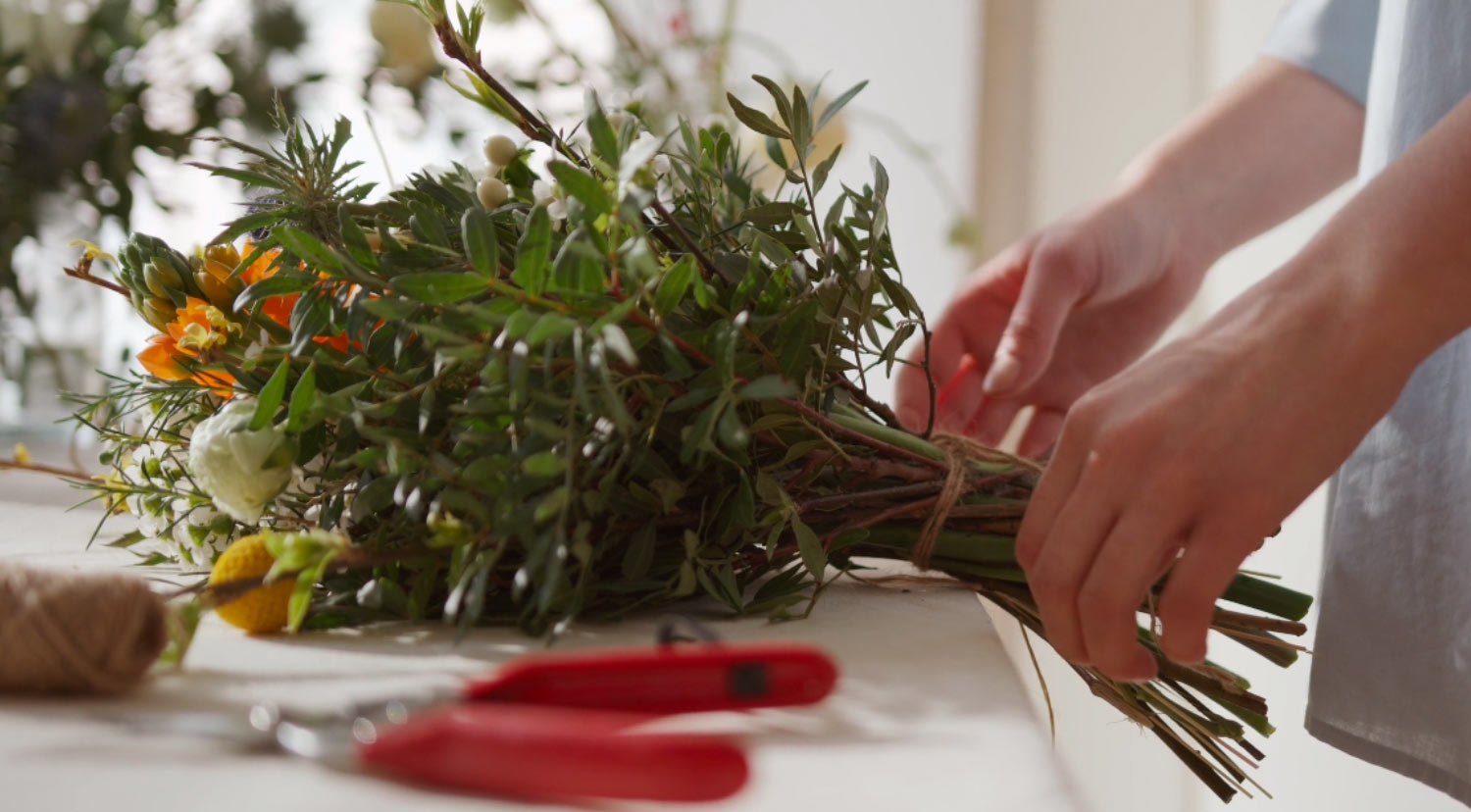How to Create your First Floral Design Portfolio
Coming up with new ideas and inspiration for your first-ever portfolio can be tricky. There is plenty to think about other than just the flower arrangements.
You need to focus on your niche, the aesthetic you are best at, what your clients want, and what you can actually deliver. An often neglected part of portfolio building is the photography skills, the organization of each project, and how you present your creation.
This guide is all about simplifying this complicated process so you can begin attracting your dream clients.
Focus on Your Capacity
When it comes to assembling your work, more isn’t always better. You want to strike the perfect balance between what your clients want and what you can actually deliver.
Try to include designs that you are interested in doing again. If you didn’t like working on a specific project, such as creating a vintage theme or working on a restrictive baby shower project, don’t include that in your portfolio. This may seem counterintuitive since you want to attract as many clients as possible, but it is actually helpful.
It ensures that you don’t get asked to do another project similar to the one you had a bad experience with.
Plan a Budget
Make sure you design your portfolio with a specific price point or at least some different price points in mind. There is no reason to show high-end decorations to a client with a limited budget.
In the end, it will only raise their expectations while your payout remains the same. This is what makes the next step so important.
Organize Your Portfolio
It’s a good idea to divide projects at different price points into different sections. You don’t always have to be too straightforward. Create names for each section that can communicate the price points, such as “Silver Package” and “Gold Package,” and set different boundaries for them.
This can help you set the right expectations with your client and avoid nasty bargaining later on.
Use a System
New Floral designers often go by the flow of their work. They focus too much on their best work and forget to maintain a good balance between different project styles.
While it’s good to showcase your best work, you should also remember that clients will look at your portfolio with different needs. Some will skip every section of the portfolio and go directly to the Wedding Projects.
Likewise, some are going to ignore every other aesthetic and focus on your spring-related decorations. This is why it’s important to add as much variety as possible. A good idea is to have a checklist for every project, just like the one below.
This will keep your portfolio incredibly helpful all year round. Clients will be able to make up their minds more quickly as they can clearly see what they are getting.
Avoid Overly Sticking to Your Niche
There is nothing better than having a specific niche that makes your workflow nicer and your skills more prominent. A Niche can also help you stand out when it comes to competitive markets with a lot of floral designers available.
But they can also limit your market size. You want to attract a good number of clients every month, and that requires you to please different types of tastes and preferences. This is where creating a checklist like the one above can help. It will prevent you from including too much of just one design or project type.
Create A Visual Focus
When adding your designs, make sure you use pictures that help a client decide. This means adding both the bigger picture and the small picture. Make sure to add a wide-ranging picture that shows the overall theme and each smaller decoration.
The next must-have is the smaller picture. If you created a garland, a bouquet, corsages, and wreaths, make sure to highlight the colors, arrangement, and styling with focused pictures.
Because you will have limited space on the portfolio, be ruthlessly picky and let go of some of the work.
Avoid Comparison
This tip may as well be on the top of the list. It’s very common for beginning floral designers to look for inspiration and use other artists as a benchmark.
No matter how well-intentioned, such a practice always brings in more harm than good. Firstly, every floral designer is uniquely skilled and possesses a different advantage in different niches.
Secondly, comparing creative work is never fair and can lead to unnecessary doubt in one’s own ability. Not only will you be able to stand out when you go with your own style, but it also makes your workflow easy as nobody can do your styles as effortlessly as you.
Go By Availability
You can’t find every type of flower everywhere. Make sure you add the flowers that are widely available and not something that you luckily found once.
If you own your own flower supply and have a shop, you may be able to offer a more competitive price by including the flowers that are abundant in stock. However, there are still clients who pay highly to get a specific collection of hard-to-find flowers.
Keeping in touch with various florists who can deliver rare finds can help you secure high-paying clients.
Don’t Rush It
Make sure you have worked on enough projects, with enough clients, and in enough styles, before you finalize the portfolio. It does seem like a paradox that you need clients to make a portfolio, but you can’t find clients without a portfolio.
However, you can keep your portfolio digital for as long as needed. It remains highly updatable, amendable, and shareable. Getting a good-quality portfolio printed demands a sizeable budget and, therefore, should be saved for the later stages of your floral design career.
Conclusion
Wrapping everything up, focus on your own style, your preferences, create a budget, and manage client expectations beforehand.
Don’t lean too heavily on particular types of projects or styles (unless that’s the only style you do), and add as much variety as possible. Make sure to use a systemic checklist that helps you showcase different themes/seasonality of different projects.




